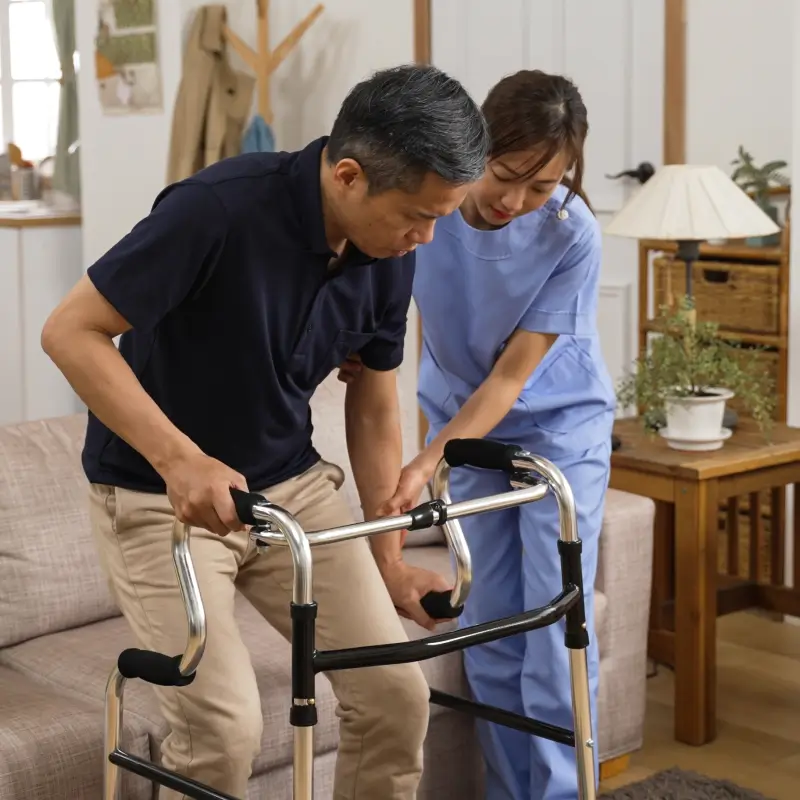
A stroke is a life-altering event that can affect people physically, emotionally, and mentally. Life after a stroke is about learning to live again, facing challenges, and discovering new ways to cope. While the recovery journey may seem daunting, it is important to remember that many stroke survivors go on to lead fulfilling lives with the right support and Neurorehabilitation.
What Happens After a Stroke?
A stroke occurs when blood flow to a part of the brain is interrupted, either by a clot (ischemic stroke) or a burst blood vessel (hemorrhagic stroke). This can lead to brain damage and affect functions such as movement, speech, and memory. Recovery after a stroke depends on the severity of the stroke, the area of the brain affected, and how quickly treatment was received.
The Recovery Process
1. Physical Rehabilitation
- Physical rehabilitation is a key part of post-stroke recovery. Depending on the extent of the damage, a stroke survivor may experience paralysis or muscle weakness, particularly on one side of the body. Rehabilitation can include:
- Physical Therapy (PT): Focuses on improving mobility, strength, and coordination. PT may involve exercises to help regain control of muscles and relearn basic movements such as walking.
- Occupational Therapy (OT): Aims to help stroke survivors regain the ability to perform daily tasks like dressing, eating, and personal care. OT also teaches patients how to use assistive devices, such as canes or braces, if needed.
- Speech Therapy: If the stroke affects speech or swallowing, speech-language therapy can help improve communication skills and relearn how to swallow safely.
2. Emotional and Psychological Support
- Stroke survivors often experience emotional challenges, such as frustration, anger, depression, or anxiety. These feelings are natural, especially when adjusting to new physical limitations. Addressing emotional well-being is just as important as physical recovery. Key steps include:
- Counseling or Therapy: Talking to a psychologist or counselor can help manage the emotional impact of a stroke and develop coping strategies.
- Support Groups: Many stroke survivors find comfort in joining support groups, where they can connect with others who have experienced similar challenges.
- Medications: In some cases, medication for depression or anxiety may be necessary, as mood changes can impact recovery.
3. Cognitive Rehabilitation
- Cognitive abilities such as memory, problem-solving, and concentration can also be affected by a stroke. Cognitive rehabilitation helps restore these functions. It may involve brain exercises, puzzles, or other activities designed to improve mental sharpness. Working with a neuropsychologist or occupational therapist can assist with specific cognitive challenges.
Adapting to a New Normal
For many stroke survivors, life after a stroke involves finding new ways to accomplish everyday tasks. Here are some practical steps to adapt:
- Home Modifications: Simple changes, such as installing grab bars in the bathroom, using a shower chair, or rearranging furniture for easier mobility, can make life at home safer and more comfortable.
- Assistive Devices: Tools like walkers, canes, or wheelchairs can help with mobility, while communication aids may assist those with speech difficulties.
- Patience and Flexibility: Recovery can be slow, and setbacks may happen. It’s important to set realistic goals, celebrate progress (no matter how small), and be open to adjusting plans as needed.
Preventing Another Stroke
One of the main concerns for stroke survivors is preventing a second stroke. This requires lifestyle changes and medical management, such as:
- Medications: Taking prescribed medications, such as blood thinners or cholesterol-lowering drugs, can reduce the risk of another stroke.
- Healthy Diet: Eating a heart-healthy diet low in sodium, saturated fats, and processed sugars is crucial. Focus on vegetables, fruits, lean proteins, and whole grains.
- Exercise: Regular physical activity helps improve cardiovascular health, manage weight, and reduce blood pressure, all of which lower the risk of stroke. Always consult a doctor before starting a new exercise regimen.
- Quit Smoking and Limit Alcohol: Smoking and excessive alcohol consumption increase stroke risk. Quitting smoking and drinking alcohol only in moderation are essential for long-term health.
Long-Term Outlook
The road to recovery after a stroke is different for everyone. Some stroke survivors regain full independence, while others may need ongoing support. With determination, therapy, and a positive mindset, many people find ways to live fulfilling lives, even if their abilities have changed.
Tips for Stroke Survivors:
- Celebrate Milestones: Focus on small victories. Each step in recovery, no matter how minor, is a significant achievement.
- Stay Positive: It’s normal to feel discouraged at times, but maintaining a positive outlook helps keep you motivated during the rehabilitation process.
- Stay Engaged: Continue to pursue hobbies and interests you enjoy. Socializing, reading, or taking up new hobbies can enrich your life and stimulate cognitive recovery.
Conclusion
Life after a stroke can be challenging, but it also brings opportunities for growth and adaptation. With the right care, support, and determination, many stroke survivors not only recover but thrive in their new circumstances. Remember, stroke recovery is a marathon, not a sprint—progress may take time, but every step forward is a step toward a better quality of life.

